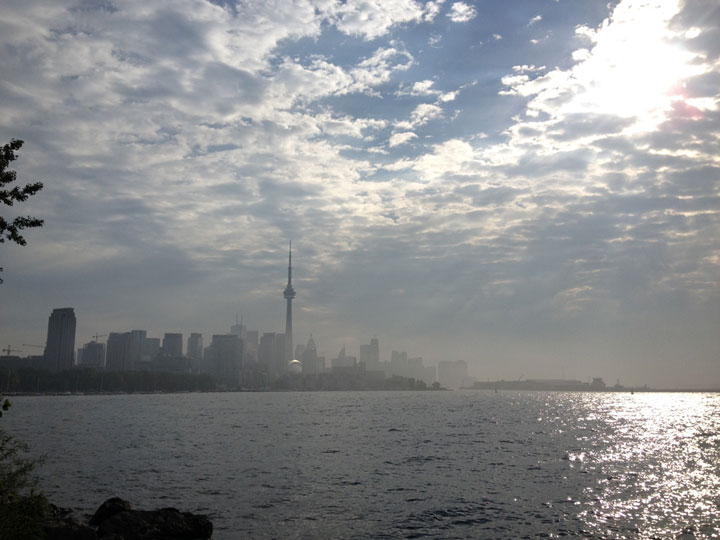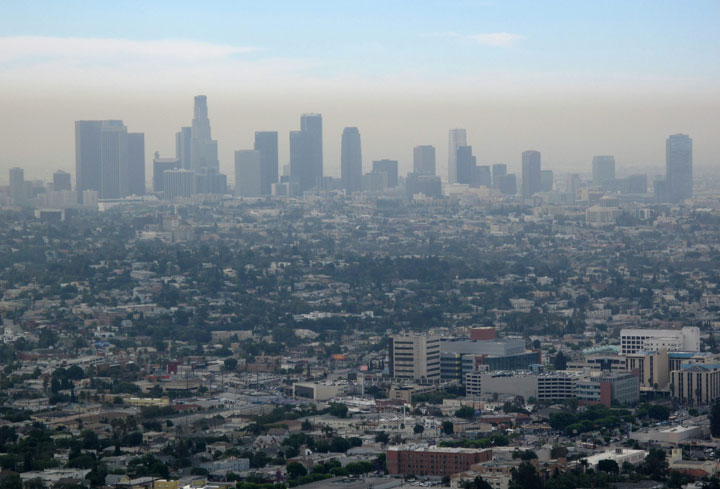TORONTO – The residents of Etobicoke learned this week that the levels of pollution — contaminants associated with an increased risk for heart and lung diseases — in their community were at “levels of concern.”

The five contaminants in Etobicoke (Wards 5 and 6) — carbon monoxide, nitrogen oxides, ozone, particulate matter, and sulphur oxides — may increase the risk of premature mortality by as much as 7.4 per cent above the baseline, a study released by the City of Toronto this week found.
Specifically, the pollutants responsible for the risks are fine particulate matter, known as PM 2.5, and nitrogen dioxide (NO2). PM 2.5 is particulate matter that measures 2.5 microns in diameter or less. It penetrates the respiratory more easily than larger particles.
Impact of Air Quality on Health in South Etobicoke
Residents of Wards 5 and 6 may wonder why their risk seems to be so much higher than in other areas of the city — or if that’s the case at all.
The truth is, their risk isn’t all that much higher than the rest of the city. In fact, it’s even lower than in the east end of Toronto.
“Actually, the levels that we’re seeing in this area are fairly consistent with what we’re seeing in other areas,” Stephanie Gower told Global News. Gower is a research consultant with Toronto Public Health who worked on the recent study.
The key, she said, is that “there’s an increased risk compared with no air pollution at all.”
READ MORE: Exposure to traffic pollution a health risk for third of Canadians: researchers
The major sources of increased risks across Toronto are areas near highways, Gower noted.
Etobicoke is a hub with several major arteries, most notably Highway 427, the Queensway and the QEW that not only has heavy car traffic, but also heavy truck traffic. According to the Ministry of Transportation, in 2010, the annual average daily traffic along the 427 — from just the QEW to Dundas — was 344,800 vehicles. That’s just within 1.7 km. From Evans Road to the QEW, which is a distance of a mere 0.3 km, the annual average daily traffic is 148,000 cars.
In 2011, a City of Toronto study found that in Wards 30 and 32 (Toronto-Danforth and Beaches-East York), there was “a cumulative excess risk of 8.9 per cent” for the same contaminants. That means that the risk of mortality for respiratory and cardiovascular diseases was almost 10 per cent higher than if there was no pollution at all. And the risk was higher closer to the Don Valley Parkway.
Several studies have analyzed air pollution in areas with high traffic. A 2004 study found that the mortality rate near major roadways was advanced by as much as 2.5 years.
In 2004, Toronto Public Health estimated that air pollution — not just from the top five, but from all sources — was responsible for about 1,700 premature deaths and 6,000 hospitalizations each year in the city. That was up from 1,000 and 5,500 respectively in a 2000 study.
It’s no wonder: Statistics Canada found in 2011 that 69.9 per cent of commuters get to work by car, van or truck. The average commuting time for Torontonians is 32.8 minutes, the longest time in the country.
The bigger picture
There were, according to Statistics Canada, 7,768,256 road motor vehicles registered in Ontario in 2010. Of course, not all those vehicles were on Toronto roads (though when you’re bumper-to-bumper on the 401 it may feel that way), but you can bet a large number of those have travelled a 400-series highway at some point.
MAP: Statistics Canada: Percentage of the employed labour force using a car, truck or van to get to work in 2011
Statistics Canada’s 2011 National Household Survey found that 17.7 per cent of Torontonians carpooled to work.
To be fair, Toronto’s air isn’t anywhere as bad as California’s. That U.S. state, according to the American Lung Association’s State of the Air report in 2013, has 8 out of 10 cities on a list of those with the worst air in the country. And that’s after years of laws and incentives to improve the air quality and pollution levels.
The solution to easing up on traffic exhaust — the main source of these pollutants — exists on multiple levels: vehicle manufacturers; government (federal, provincial and municipal) as well as with us, the commuters.
Looking to European cities like London, England, which has a low-emission zone where certain vehicles are restricted, could provide an example.
Though the program is still in its early stages, a recent study found that particles of PM 2.5 — most found in fuel combustion, which could be motor vehicles, power generation, etc. — was reduced in surrounding areas of London since the program’s implementation.
Make no mistake: there is no easy fix to our air pollution problem. There will be consequences to changing the way we think about commuting: higher taxes, initial traffic delays due to roadway or transit upgrades, and extra charges.
The questions is: what are we willing to do to get back those 2.5 years of our lives?




Comments